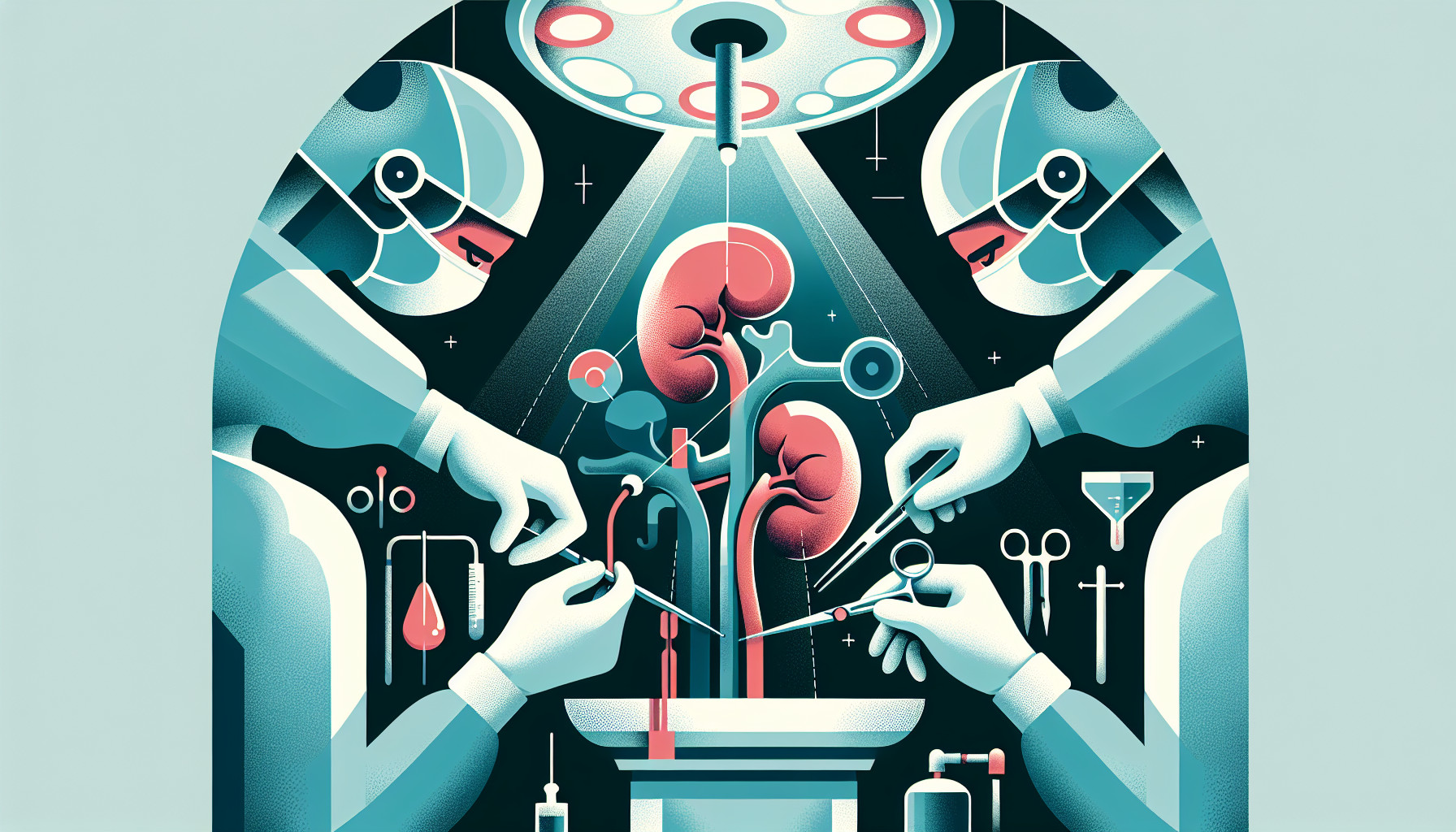Our Summary
This research paper discusses how the use of robot-assisted surgery has improved complex surgeries related to kidneys and the area behind the abdominal cavity. In particular, urologists are now more commonly performing surgeries like radical nephroureterectomy (removal of a kidney and ureter), radical nephrectomy with IVC thrombectomy (removal of a kidney along with the removal of a clot in the inferior vena cava), and retroperitoneal lymphadentectomy (removal of lymph nodes in the retroperitoneal space) using a laparoscopic approach (a minimally invasive surgery using small incisions). The paper gives a detailed description of how they conduct a kidney and ureter removal surgery using robotic assistance.
FAQs
- What is a laparoscopic nephrectomy and how has robot-assisted surgery impacted it?
- What types of surgeries are now more commonly done via a laparoscopic approach?
- Can you provide a brief description of the robotic nephroureterectomy surgical approach?
Doctor’s Tip
One helpful tip a doctor might tell a patient about laparoscopic nephrectomy is to follow all pre-operative instructions provided by the surgical team, including fasting guidelines and medication protocols. It is important to communicate any concerns or questions with your healthcare provider before the procedure to ensure a successful outcome. After surgery, following post-operative care instructions, including proper wound care and activity restrictions, will help to promote a smooth recovery process.
Suitable For
Patients who are typically recommended for laparoscopic nephrectomy include those with renal cell carcinoma, kidney stones, polycystic kidney disease, and other benign kidney conditions. Additionally, patients with a need for a radical nephroureterectomy or retroperitoneal lymphadenectomy may also be candidates for laparoscopic nephrectomy. Patients who are not suitable candidates for open surgery due to medical comorbidities or who desire a minimally invasive approach may also be recommended for laparoscopic nephrectomy.
Timeline
Before laparoscopic nephrectomy:
- Consultation with a urologist to discuss the need for surgery and the possible options
- Pre-operative tests and evaluations to ensure the patient is a suitable candidate for surgery
- Pre-operative counseling and preparation for the surgery, including instructions on fasting and medication management
During laparoscopic nephrectomy:
- Anesthesia is administered to the patient
- Small incisions are made in the abdomen to insert the laparoscopic instruments
- The surgeon uses a camera and specialized tools to remove the affected kidney
- The surgery typically lasts 2-3 hours
- The incisions are closed and the patient is taken to the recovery room
After laparoscopic nephrectomy:
- The patient is monitored in the recovery room for a period of time
- Pain management is provided to help with post-operative discomfort
- The patient may be discharged from the hospital within a day or two, depending on their recovery
- Follow-up appointments are scheduled to monitor the patient’s progress and ensure proper healing.
What to Ask Your Doctor
- What is laparoscopic nephrectomy and why is it recommended for my condition?
- What are the potential risks and complications associated with laparoscopic nephrectomy?
- How experienced are you in performing laparoscopic nephrectomy procedures?
- What are the expected outcomes and recovery time after laparoscopic nephrectomy?
- Are there any alternative treatment options to consider?
- Will I need any additional tests or evaluations before the surgery?
- What type of anesthesia will be used during the procedure?
- How long will the surgery take and will I need to stay in the hospital afterwards?
- Will I need any special care or follow-up appointments after the surgery?
- What should I expect in terms of pain management and post-operative care?
Reference
Authors: Caputo PA, Ko O, Patel R, Stein R. Journal: J Surg Oncol. 2015 Dec;112(7):723-7. doi: 10.1002/jso.24033. Epub 2015 Sep 9. PMID: 26352165
